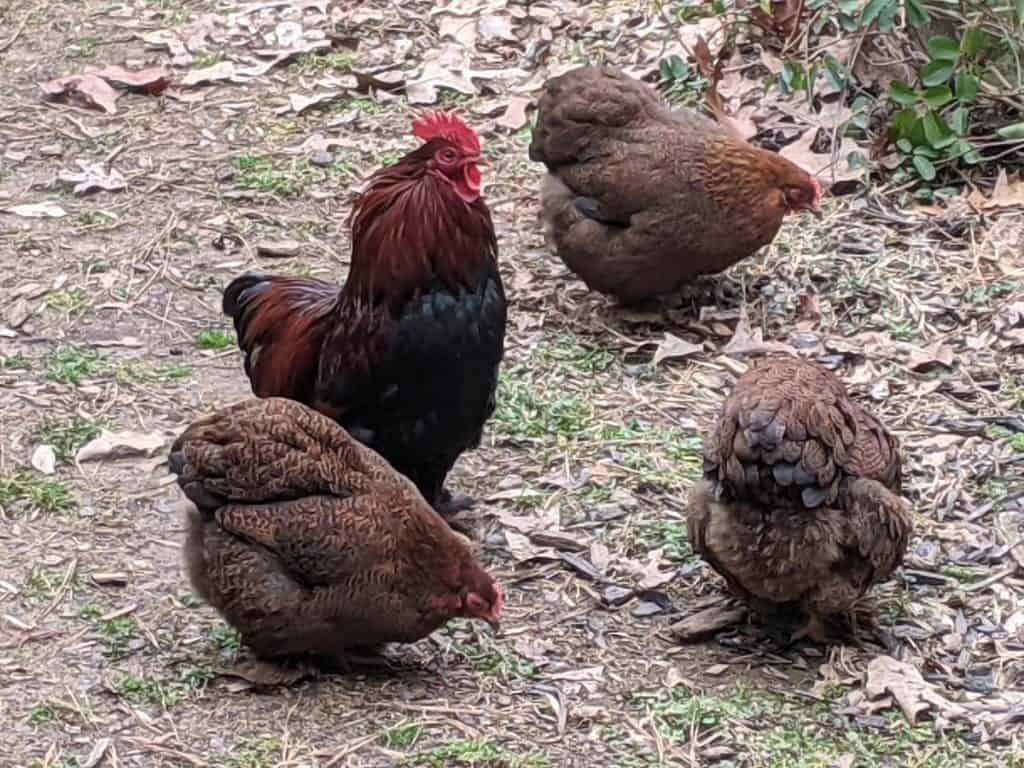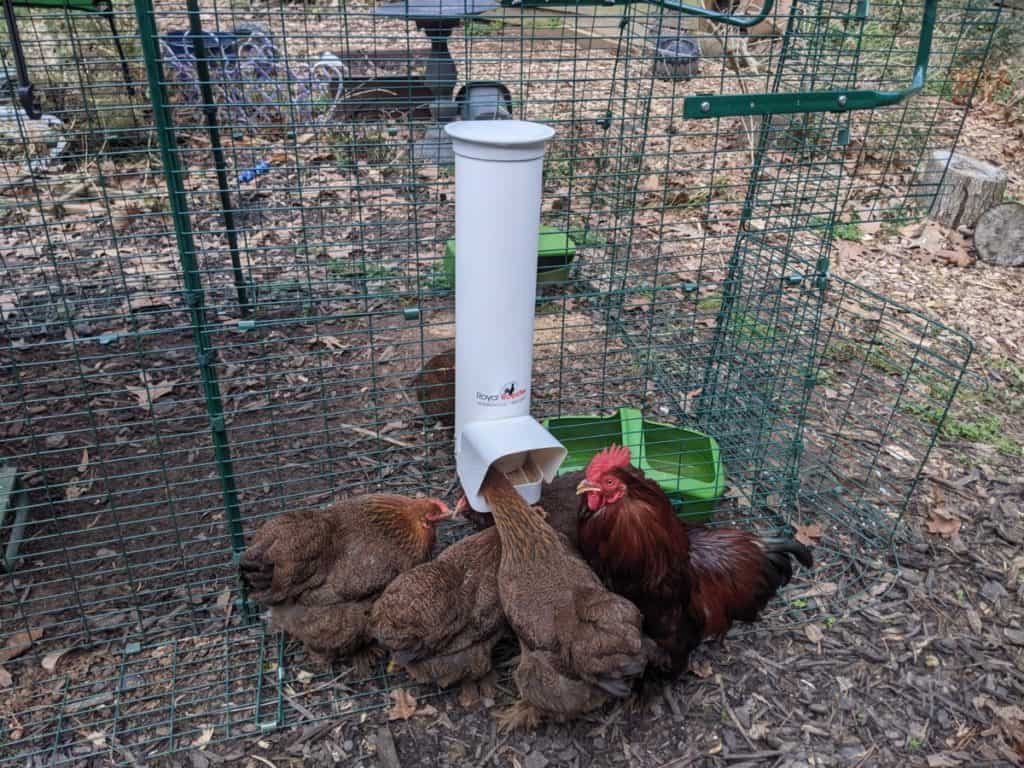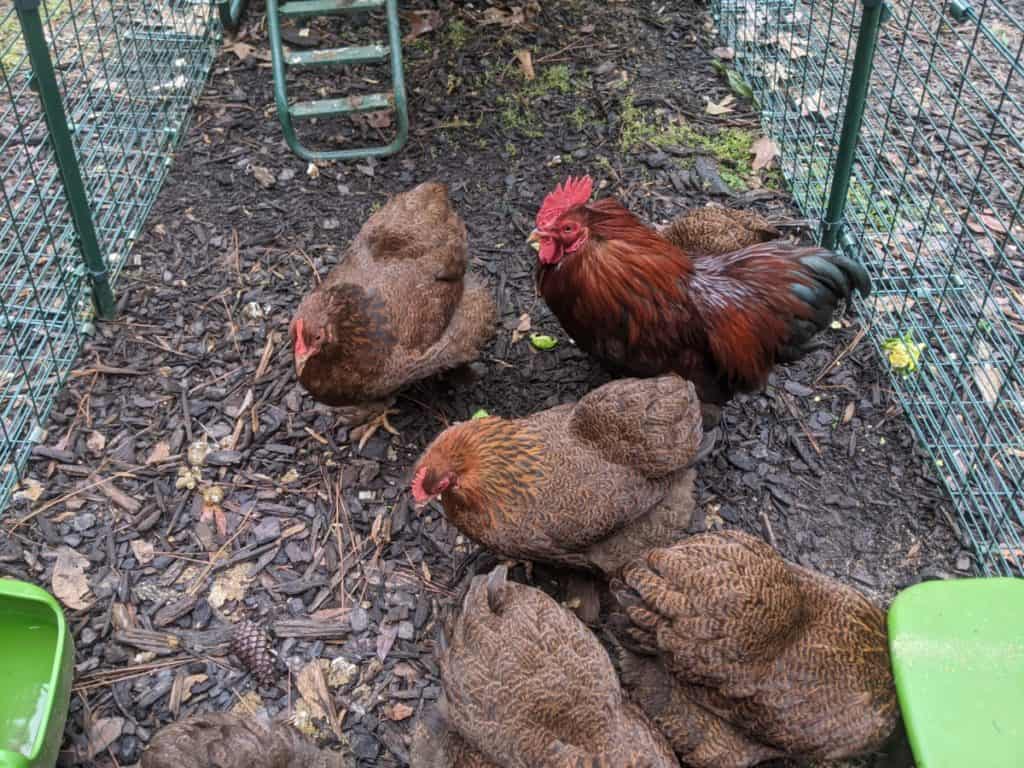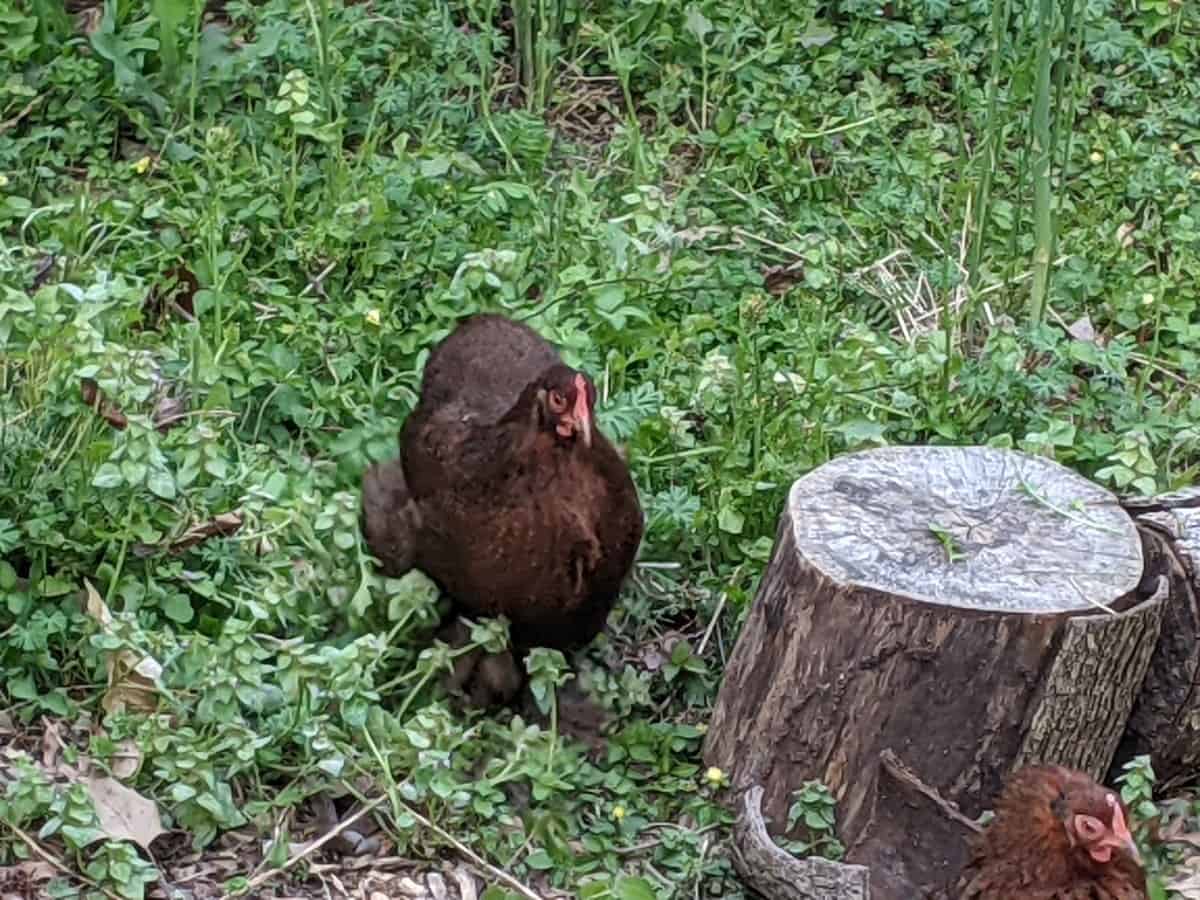If you don’t know too much about chickens, then it can get confusing because of all the terms and names that are used to refer to chickens. These terms include hens, cocks, cockerels, roosters, capons, etc. So, what are the actual differences between all of these terms?
A chicken is the common (non-scientific) name used to refer to the species of bird Gallus gallus domesticus. The term hen is used to refer to an adult female (over one year of age) of the chicken species. A male chicken that’s over one year of age is called a cock or a rooster.
There is only one main difference between the terms chicken and hen. In this article, we look at this difference and also at the different terms that are used to refer to chickens. We will also compare male and female chickens.

Is There A Difference Between A Chicken And A Hen?
There is only one difference between a chicken and a hen. A chicken is a species of bird with the scientific name of Gallus gallus domesticus, whereas a hen is simply the term used to refer to an adult female bird of the chicken species.
What Are The Definitions Of The Different Chicken Terms?
Terms For Chickens Based On Age And Gender
A chicken is referred to as a chick up to between five or six weeks of age, regardless of the chicken’s gender.
As mentioned previously, an adult female chicken is referred to as a hen. When the female chicken is below the age of one year, then she is referred to as a pullet.
Chickens generally start laying eggs before they are one year old, and when the pullet is about to start laying eggs, she is referred to as a point-of-lay pullet. Often you can purchase a point-of-lay pullet.
An adult male chicken is called either a cock or a rooster. When the male chicken is below the age of one year, then he is referred to as a cockerel.
The term capon is used to refer to an adult male chicken that has been castrated or sterilized.

Terms For Chickens Based On Weight At A Certain Age
The terms for chickens that are based on how much a chicken weighs at a certain age are specifically in reference to chickens that are kept and raised for meat.
A meat chicken that is between the ages of six and nine months (no weight is specified in this one case) is referred to as a boiler chicken.
A cockerel that weighs between two and three pounds by the time it is eight to twelve weeks old is referred to as a broiler chicken.
A chicken that weighs between three and four pounds by the time it is twelve to fourteen weeks old is referred to as a fryer chicken.
A chicken that weighs between four and six pounds by the time it is twelve to fourteen weeks old is referred to as a roaster chicken.
What Is The Difference Between A Hen And A Rooster?
As has already been established, a hen is an adult female chicken, whereas a rooster is an adult male chicken. However, there are differences beyond just gender and the physical reproductive organs.
Hens Vs. Roosters: Size
Roosters are always bigger than their hen counterparts. This means that when you compare a rooster and a hen of the same breed, this is true. But a rooster of one breed can be smaller than a hen of a different breed of chicken.
Hens Vs. Roosters: Feathering
Probably the most obvious physical difference between hens and roosters is the feathering of each. Notably, roosters have hackle feathers, saddle feathers, and sickle feathers, all of which hens lack.
It should be noted that while hens do not have hackle feathers, saddle feathers, and sickle feathers, this does not mean that they do not have neck, back, and tail feathers; it just means that they have normal feathers in these anatomical locations.
The hackle feathers are found on the neck of a rooster, and they are pointed at the end. Comparatively, a hen has normal neck feathers that are rounded at the end.
Male chickens have saddle feathers, which are found along their back at the base of the tail. These feathers are long, pointed, and often very soft compared to the other back feathers. Female chickens do still have a saddle region, but it is covered in normal and short feathers.
Finally, roosters have sickle feathers. These are modified tail feathers that are long and shaped like sickles. However, not all of a male chicken’s tail feathers are sickle feathers. Hens have straight and shorter tail feathers compared to roosters.
Hens Vs. Roosters: Coloring
Another obvious difference between adult male and female chickens is the coloring.
As with many bird species, the male chickens are most often more brightly colored than the females.
There are a few chicken breeds where the males have similar coloring to the females, but hens are never more colorful than roosters.
Hens Vs. Roosters: Wattles And Combs
Wattles are the bright and fleshy protuberances on a chicken’s neck below its beak. Combs are the bright and fleshy protuberances on the top of a chicken’s head.
Roosters have much larger and redder wattles, and combs than hens do at each life stage.
Hens Vs. Roosters: Legs And Feet
Roosters have larger and thicker legs and feet than hens. However, more noticeable than that is the presence of a spur.
Male chickens are armed with a fiercely sharp and bony talon that grows from their legs. They use these spurs to fight other males and protect themselves and their hens.
It should be noted that some hens can have spurs, but they are much smaller and distinguishable from a rooster’s spurs.
Hens Vs. Roosters: Egg-Laying
This is an absolutely sure way to know if you have a rooster or a hen. If your chicken lays an egg, then she is a hen because roosters are not anatomically and physiologically designed to produce and lay eggs.
Many people believe that a female chicken will only lay eggs if a rooster is present. This is not true; hens will lay eggs whether or not there is a rooster in the flock. It’s like a female human ovulating. She does so irrespective of her sexual activity.
However, all the eggs laid by hens that have no rooster will be unfertilized, so there will be no chicks hatching from them.
Hens Vs. Roosters: Crowing
Do only male chickens crow? The answer to this may seem like a straightforward yes, but, as it turns out, it is more complicated than this.
Typically, yes, if your chicken is crowing, it is a rooster. However, in certain circumstances, when a flock of hens is kept without a rooster, or when the hen to rooster ratio is very high, then a female chicken will start to crow.
But the hen does not just start crowing. She will also stop laying eggs, grow a larger wattle and comb, and may even develop spurs.
This is an evolutionary adaptation to provide the flock with a protector in the absence of a natural male protector.
Along with the physical attributes and the crowing, these altered hens will become more aggressive and protective and will even show physical interest in other unaltered hens.

Conclusion
Chickens are a species of bird. A baby chicken is called a chick, irrespective of its gender.
After about five to six weeks, the chickens enter their adolescent phase, and differences between the male and female chicks start to become noticeable. At this point, a female chicken is called a pullet, and a male chicken is called a cockerel.
Once the pullets pass one year of age, they are referred to as hens, and once the cockerels pass one year of age, they are referred to as cocks or roosters.
There are many obvious differences between roosters and hens. Roosters have more showy feathering and coloring than females, and they are also bigger than their breed counterparts. Additionally, only female chickens will lay eggs.





